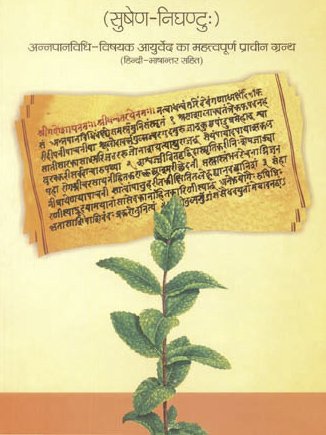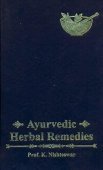Argyreia nervosa: 2 definitions
Introduction:
Argyreia nervosa means something in Hinduism, Sanskrit, biology. If you want to know the exact meaning, history, etymology or English translation of this term then check out the descriptions on this page. Add your comment or reference to a book if you want to contribute to this summary article.
In Hinduism
Ayurveda (science of life)
Source: Ancient Science of Life: Phytochemical investigation of natural and in vitro raised Vṛddhadāruka plantsArgyreia nervosa (Sanskrit: Vṛddhadāruka, commonly known as ‘elephant creeper’) is the name of a medicinal plant used in Ayurveda.—Argyreia nervosa is a woody climber that belongs to the family Convolvulaceae. Seeds of this plant contain hallucinogens including ergot alkaloids and a naturally occurring lysergic acid amide. Traditionally the plant is used in the treatment of gonorrhea, strangury, chronic ulcers, diabetes, anemia and cerebral disorders. The plant is also used as appetitiser, brain tonic, cardiotonic, aphrodisiac. It possesses anti-inflammatory, immunomodulatory, antibacterial, antiviral and antifungal activities.
Argyreia nervosa (Convolvulaceae) is a perennial climbing shrub with woody tomentose stem, native to Indian subcontinent. The hallucinogenic properties of Argyreia nervosa are because of the seeds that contain the highest concentration of psychoactive compounds in the entire family. Śūla, śopha, apasmāra, arṣa, aruci, āmavāta, anāha, graharbādhā, gulma, hrdrujā, kāsa, kṛmi, mūtrakrchra, meha, pāṇḍu, taktapitta, udara, unmāda, vātarakta are some of the therapeutic uses of Argyreia nervosa in Ayurvedic system of medicine. Leaves of the plant have nematicidal, antibacterial, and antimicrobial activity, root of this plant is used in rheumatism, gonorrhea, chronic ulcer and diseases of nervous system. It is also used us a tonic, diuretic and aphrodisiac. It also has hypoglycemic, immunomodulatory, hepatoprotective, anti-inflammatory, and analgesic activities. The plant is listed as critically endangered in Vindhya region.

Āyurveda (आयुर्वेद, ayurveda) is a branch of Indian science dealing with medicine, herbalism, taxology, anatomy, surgery, alchemy and related topics. Traditional practice of Āyurveda in ancient India dates back to at least the first millenium BC. Literature is commonly written in Sanskrit using various poetic metres.
Biology (plants and animals)
Source: Google Books: CRC World Dictionary (Latin names; Binomial nomenclature)Argyreia nervosa (Burm.f.) Bojer is the name of a plant defined in various botanical sources. This page contains potential references in modern medicine, Ayurveda, and other local traditions or folk medicine. It has the following synonyms: Argyreia speciosa Bojer, Argyreia speciosa (L.f.) Sweet, Convolvulus nervosus Raf., Convolvulus nervosus Burm. f., Convolvulus speciosus Walter, Convolvulus speciosus L.f., Ipomoea speciosa (L.f.) Pers., Ipomoea speciosa (Choisy) Voss, Ipomoea speciosa Hallier f., Lettsomia nervosa Roxb., Lettsomia nervosa (Burm. f.) Roxb., Lettsomia nervosa Hort. Calc. ex C.B. Clarke, Rivea nervosa (Burm. f.) Hallier f..
References regarding Argyreia nervosa (Burm.f.) Bojer for further research on medicinal uses or toxicity:
· Species Plantarum (1753)
· Flora Indica (1768)
· Supplementum Plantarum (1782)
· Fl. Carol. (1788)
· Flora Cochinchinensis (1790)
· Flora Peruvianae, et Chilensis Prodromus (1794)
· Synopseos Plantarum (1805)
· Hortus Bengalensis, or ‘a Catalogue of the Plants Growing in the Hounourable East India Company's Botanical Garden at Calcutta’ (1814)
· Fl. Ludov. (1817)
· Flora Indica (1824)
· Hortus Britannicus (1826)
· Flora Indica, or ‘Descriptions of Indian Plants’ (1832)
· Mémoires de la Société de Physique et d’Histoire Naturelle de Genève (1833)
· Hortus Mauritianus (1837)
· Botanische Jahrbücher für Systematik, Pflanzengeschichte und Pflanzengeographie (1893)
· Vilm. Blumengärtn., ed. 3 (1895)
· Bulletin de l’Herbier Boissier (1897)
· Phytomedicine. (2002)

This sections includes definitions from the five kingdoms of living things: Animals, Plants, Fungi, Protists and Monera. It will include both the official binomial nomenclature (scientific names usually in Latin) as well as regional spellings and variants.
See also (Relevant definitions)
Full-text (+203): Samudra-soka, Chandrapada, Samudrashok, Vardharo, Kadasige, Samudrasos, Katalpaccai, Vakulappaccai, Samudrapachcha, Samtrappachai, Samudrappacca, Samuttirappaccai, Katarpalai, Samutrachogi, Uritusonbi, Vakul, Perumkurumba, Samuttirappalai, Katarcoki, Kakkatan.
Relevant text
No search results for Argyreia nervosa; (plurals include: Argyreia nervosas) in any book or story.
Related products
